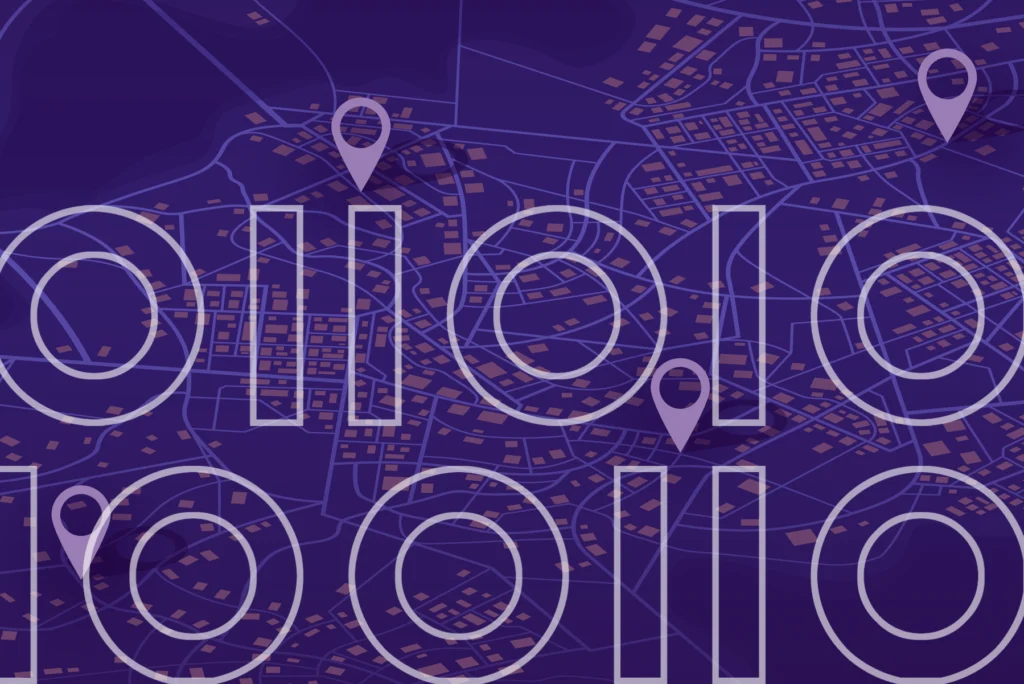When speaking to organizations about data integrity, and the key role that both data governance and location intelligence play in making more confident business decisions, I keep hearing the following statements:
- “For any organization, data governance is not just a nice-to-have!”
- “Everyone knows that 80% of data contains location information. Why are you still telling us this, Monica?”
As a matter of fact, understanding the importance of data governance, the prevalence of location data, and how combining these can help you improve the success of your strategic data programs is essential.
This article explores how governing location-based data can:
- accelerate data-driven decision-making and regulatory compliance
- reduce redundant work and inefficiencies
- drive more impactful outcomes in your organization
Let’s start with the first statement.

“Data governance is not just a nice-to-have.”
According to Gartner, 80% of organizations will have deployed multiple data hubs to drive mission-critical data and analytics sharing and governance by 2026. Organizations around the world are on their own unique data integrity journey to empower their teams with data that is accurate, consistent, and contextualized.
This journey must include a strong data governance framework to align people, processes, and technology, and enable them to understand and trust their data and metadata to achieve their business objectives.
Companies like Johnson & Johnson, Northwest Bank, and Central Insurance have implemented data governance programs to improve their analytics, streamline operations, and simplify compliance. These organizations understand that data governance has become an outright necessity, not an option.
But there is one more business-critical objective that heavily relies on governance – and that is maximizing the impact of location data, which exists in high volumes across any organization.
Now, let’s proceed to analyze the second statement.
“80% of all data contains location-based information.”
In over 30 years of helping customers across industries with their location intelligence and data enrichment needs, we’ve discovered that more than 80% of data contains location information.
Whatever you want to call this data – spatial, location, or geospatial – location-based data can provide you with a world of valuable context, including:
- where customers live, work, and play
- ideal locations for retail points of sales
- best-performing sales territories
- 5G coverage areas
- risk-prone areas
Location-based data is exploding right now with metadata growing faster than data!
With that in mind, why do organizations still continue to disregard how important location data is to their data strategy programs?
As customers, we use location data daily – it’s just easier and faster to get what we need from a map-based view! But most enterprises still consider working with spatial data to be a complex workstream, managed by a few skilled experts.
When you consider all the context that location data can provide – and all the negative consequences of spatial data being managed and consumed only by siloed and isolated skilled professional teams – it becomes clear: location data governance is not a nice-to-have, it is a necessity for any data-driven organization!
Location data governance is a business imperative
Business users, data stewards, data specialists and analysts’ teams might be asking themselves these types of questions about spatial data daily:
- Who is consuming our business spatial data by services and applications?
- Where is this high-volume spatial data stored?
- Who is the owner of this spatial data?
- Does our spatial data comply with our internal rules and regional regulations?
- How do we align this critical spatial data to our business goals, objectives, metrics, and processes?
- What is the impact of changing the provider of this third-party spatial data?
Simultaneously, spatial data specialists and GIS analysts working in the very same organization might be asking these questions about governing their spatial data:
- Do we have a formal data governance strategy that includes our location data?
- Does our organization’s data governance service include visibility and transparency into our location data and its metadata?
- Should we share information about our spatial data with other sectors and units inside our organization?
- What is the quality and precision of this location data?
Neither group will have clear and quick answers unless spatial data is easily discoverable, understood, and trusted by all users.
Precisely recommends including location data in your governance strategy to achieve the following:
- Make better data-driven decisions by sharing trusted spatial data and metadata across teams
- Manage costs with improved efficiencies, and elimination of redundant tasks
- Increase the value of your location analytics investments with wider exposure and understanding
- Improve collaboration across silos to share expertise and knowledge about high-value assets and usage
- Reduce risk through data governance workflow, stewardship, and policy management
How to deploy location data governance
Precisely’s approach to data governance for spatial data includes the following capabilities:
- A business-first data governance service that links business goals, objectives, and metrics to data assets – making it easy to identify value and prioritize efforts. It also provides visibility into data quality and data governance rules and scores by asset, so you can easily assess trustworthiness.
- Governance tools tailored for location data, including links to detailed maps, easy access to related metadata, and the ability to explore spatial assets in impact or lineage view – all which empower you to take informed actions, fast.
- A spatial analytics service that adds powerful spatial functionalities – like tools for calculating distance, proximity, density, clusters, catchment areas – enabling users to analyze data in context and gain meaningful spatial insights for more confident business decisions.
To learn more about the benefits of location data management and governance, watch our webinar: Why spatial data governance is critical to your business strategy.







